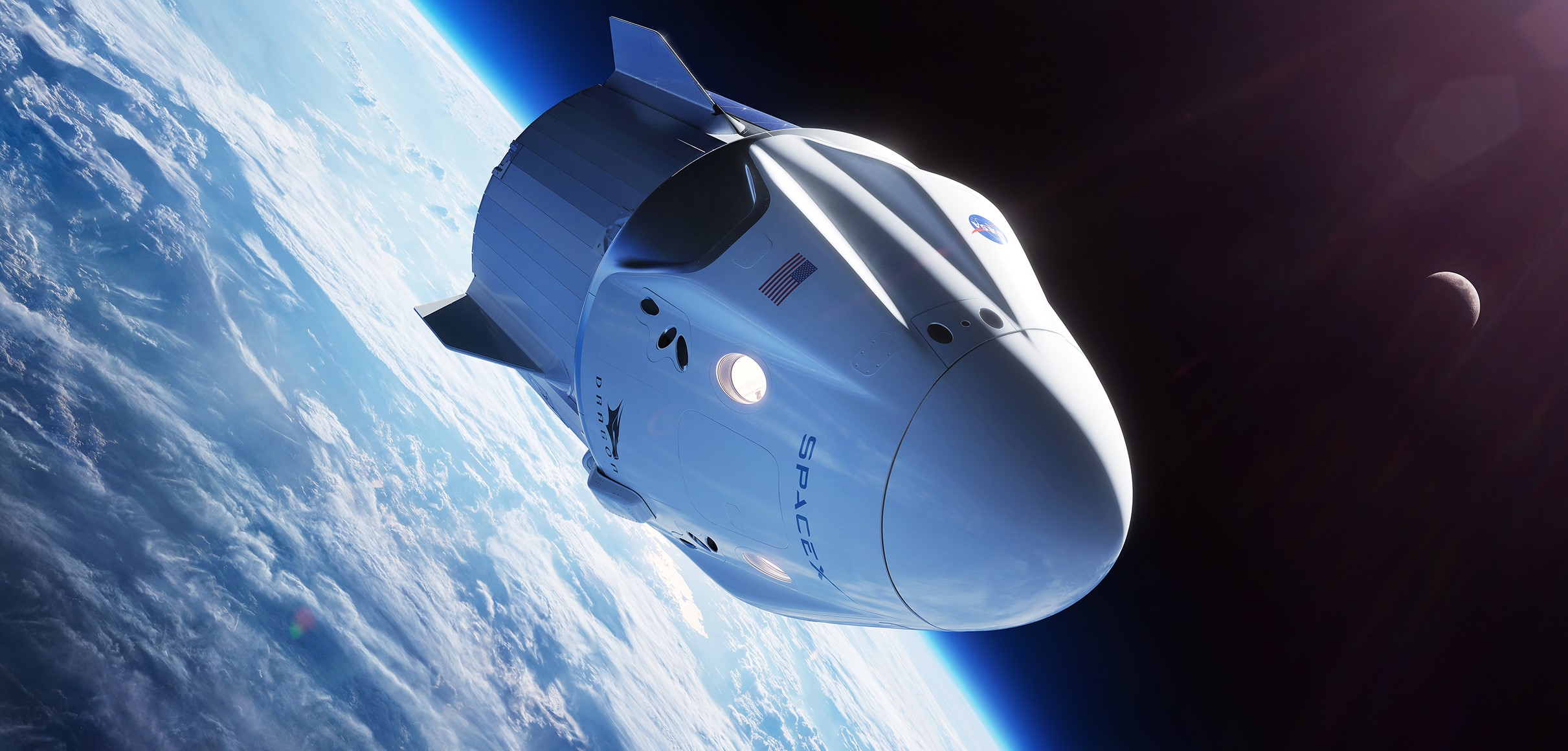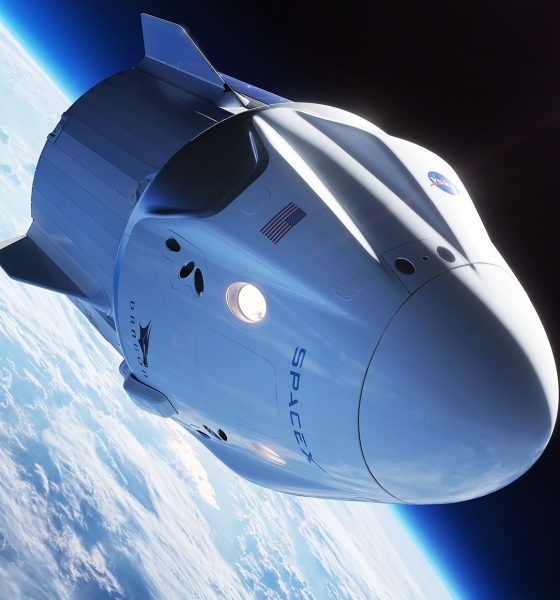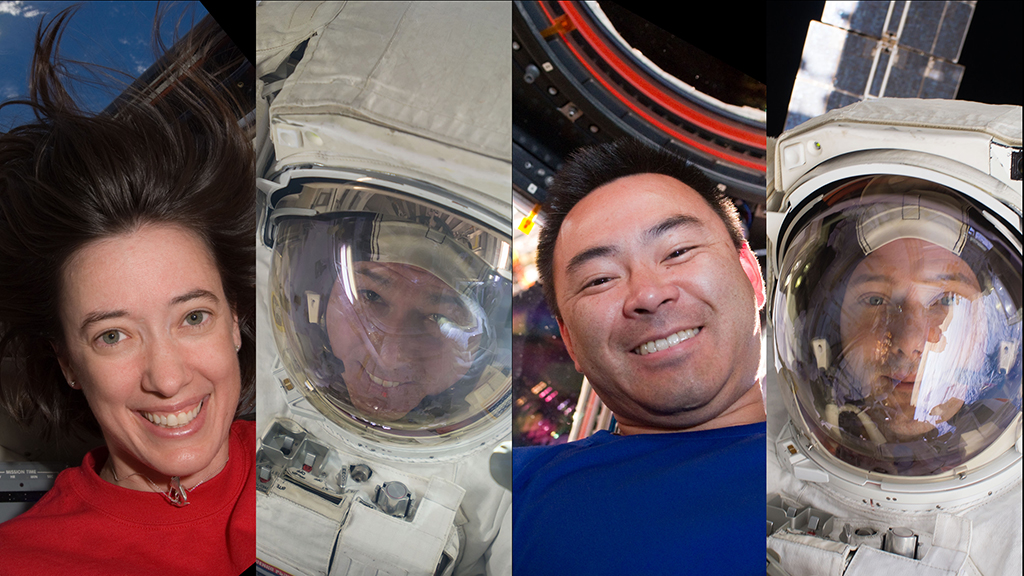

News
NASA picks diverse astronaut roster for SpaceX Crew Dragon 2021 mission
With Demo-2, the final certification test flight of SpaceX’s Crew Dragon capsule nearing completion, NASA is looking ahead to future operational crewed missions. NASA previously announced that following NASA astronauts Bob Behnken and Doug Hurley’s successful return from the International Space Station (ISS) in early August, three NASA astronauts and one Japanese astronaut of the Japan Aerospace Exploration Agency (JAXA) would soon be following on their own flight to the Space Station, SpaceX’s first operational crewed flight known as “Crew-1.” This mission is tentatively scheduled to occur no earlier than Fall of 2020.
Just days ahead of Demo-2’s anticipated conclusion, NASA, along with its international partners, has announced the roster and date of SpaceX’s third operational crewed mission referred to as “Crew-2.” Like Crew-1, the Crew-2 mission will feature a diverse international roster of four astronauts. Onboard will be veteran flyers, NASA astronauts Megan McArthur and Shane Kimbrough, along with JAXA astronaut Akihiko Hoshide, and European Space Agency (ESA) astronaut Thomas Pesquet. Should everything go as planned with Crew-1, Crew Dragon’s third operational crewed flight, Crew-2, is scheduled for liftoff no earlier than the Spring of 2021.

NASA keeps it in the family
One Crew-2 participant stands out from the rest, NASA astronaut Megan McArthur. She is a veteran NASA flyer having previously flown aboard the STS-125 space shuttle Atlantis mission in May of 2009. Although Crew-2 will be her second time to orbit, it will be her first visit to the ISS. During her first mission, she spent her time in orbit serving as a Mission Specialist servicing NASA’s Hubble Space Telescope. In 2019 she was appointed as NASA’s Deputy Chief of the Astronaut Office ISS Operations Branch, a role in which she provides support to astronauts in training and aboard the ISS.
Not only is McArthur an experienced space flyer and well-versed in mission support, but she is also married to NASA astronaut Bob Behnken. While Behnken served as Joint Operations Commander for Crew Dragon’s Demo-2 mission, McArthur was back at SpaceX headquarters in Hawthorne, CA training for her own Crew Dragon mission to the ISS.
https://twitter.com/Astro_Megan/status/1288203342250901504
McArthur was joined by her NASA and international partners Crew-2 crewmates to train at the SpaceX facility utilizing the Crew Dragon simulator. According to an interview with ESA astronaut Thomas Pesquet, the entire crew has been at various training facilities located in Texas and California presumably for weeks familiarizing themselves with Crew Dragon and ISS specific training, just as Behnken and Hurley did prior to their Demo-2 departure.
Looks like I'll be the first European to ever ride a Dragon into space! Training has already started at SpaceX's futuristic facilities. Stay tuned for more updates… and wait, how do you install the "launch" app on these giant tablet-screens? 😅😉🙃 pic.twitter.com/wD7zOf7EAl
— Thomas Pesquet (@Thom_astro) July 28, 2020
Commercial and international crew will bring the ISS to full capacity
NASA astronaut Shane Kimbrough will fly for his third trip to orbit after having previously flown aboard space shuttle Endeavour for STS-126 and aboard a Russian Soyuz spacecraft for Expedition 49/50 in 2016. Japanese astronaut Akihiko Hoshide will be the second JAXA astronaut to fly aboard SpaceX’s Crew Dragon following Soichi Noguchi on Crew-1. ESA astronaut Thomas Pesquet will be the first European to fly aboard the Crew Dragon. It will be his second mission to orbit following a six-month-long stay aboard the ISS in 2016.
The 2021 Crew-2 mission will increase the number of ISS occupants from six to a full complement of seven. Crew-2’s four Dragon Riders will be joined by a three-member crew set to launch aboard a Russian Soyuz spacecraft. The increase of long-duration crew members will allow NASA to “effectively double the amount of science that can be conducted in space,” as stated in an official NASA Commercial Crew blog post. The Crew-2 astronauts are expected to stay aboard the orbiting outpost for six months.

News
Tesla FSD fleet is nearing 7 billion total miles, including 2.5 billion city miles
As can be seen on Tesla’s official FSD webpage, vehicles equipped with the system have now navigated over 6.99 billion miles.

Tesla’s Full Self-Driving (Supervised) fleet is closing in on almost 7 billion total miles driven, as per data posted by the company on its official FSD webpage.
These figures hint at the massive scale of data fueling Tesla’s rapid FSD improvements, which have been quite notable as of late.
FSD mileage milestones
As can be seen on Tesla’s official FSD webpage, vehicles equipped with the system have now navigated over 6.99 billion miles. Tesla owner and avid FSD tester Whole Mars Catalog also shared a screenshot indicating that from the nearly 7 billion miles traveled by the FSD fleet, more than 2.5 billion miles were driven inside cities.
City miles are particularly valuable for complex urban scenarios like unprotected turns, pedestrian interactions, and traffic lights. This is also the difference-maker for FSD, as only complex solutions, such as Waymo’s self-driving taxis, operate similarly on inner-city streets. And even then, incidents such as the San Francisco blackouts have proven challenging for sensor-rich vehicles like Waymos.
Tesla’s data edge
Tesla has a number of advantages in the autonomous vehicle sector, one of which is the size of its fleet and the number of vehicles training FSD on real-world roads. Tesla’s nearly 7 billion FSD miles then allow the company to roll out updates that make its vehicles behave like they are being driven by experienced drivers, even if they are operating on their own.
So notable are Tesla’s improvements to FSD that NVIDIA Director of Robotics Jim Fan, after experiencing FSD v14, noted that the system is the first AI that passes what he described as a “Physical Turing Test.”
“Despite knowing exactly how robot learning works, I still find it magical watching the steering wheel turn by itself. First it feels surreal, next it becomes routine. Then, like the smartphone, taking it away actively hurts. This is how humanity gets rewired and glued to god-like technologies,” Fan wrote in a post on X.
News
Tesla starts showing how FSD will change lives in Europe
Local officials tested the system on narrow country roads and were impressed by FSD’s smooth, human-like driving, with some calling the service a game-changer for everyday life in areas that are far from urban centers.

Tesla has launched Europe’s first public shuttle service using Full Self-Driving (Supervised) in the rural Eifelkreis Bitburg-Prüm region of Germany, demonstrating how the technology can restore independence and mobility for people who struggle with limited transport options.
Local officials tested the system on narrow country roads and were impressed by FSD’s smooth, human-like driving, with some calling the service a game-changer for everyday life in areas that are far from urban centers.
Officials see real impact on rural residents
Arzfeld Mayor Johannes Kuhl and District Administrator Andreas Kruppert personally tested the Tesla shuttle service. This allowed them to see just how well FSD navigated winding lanes and rural roads confidently. Kruppert said, “Autonomous driving sounds like science fiction to many, but we simply see here that it works totally well in rural regions too.” Kuhl, for his part, also noted that FSD “feels like a very experienced driver.”
The pilot complements the area’s “Citizen Bus” program, which provides on-demand rides for elderly residents who can no longer drive themselves. Tesla Europe shared a video of a demonstration of the service, highlighting how FSD gives people their freedom back, even in places where public transport is not as prevalent.
What the Ministry for Economic Affairs and Transport says
Rhineland-Palatinate’s Minister Daniela Schmitt supported the project, praising the collaboration that made this “first of its kind in Europe” possible. As per the ministry, the rural rollout for the service shows FSD’s potential beyond major cities, and it delivers tangible benefits like grocery runs, doctor visits, and social connections for isolated residents.
“Reliable and flexible mobility is especially vital in rural areas. With the launch of a shuttle service using self-driving vehicles (FSD supervised) by Tesla in the Eifelkreis Bitburg-Prüm, an innovative pilot project is now getting underway that complements local community bus services. It is the first project of its kind in Europe.
“The result is a real gain for rural mobility: greater accessibility, more flexibility and tangible benefits for everyday life. A strong signal for innovation, cooperation and future-oriented mobility beyond urban centers,” the ministry wrote in a LinkedIn post.
News
Tesla China quietly posts Robotaxi-related job listing
Tesla China is currently seeking a Low Voltage Electrical Engineer to work on circuit board design for the company’s autonomous vehicles.

Tesla has posted a new job listing in Shanghai explicitly tied to its Robotaxi program, fueling speculation that the company is preparing to launch its dedicated autonomous ride-hailing service in China.
As noted in the listing, Tesla China is currently seeking a Low Voltage Electrical Engineer to work on circuit board design for the company’s autonomous vehicles.
Robotaxi-specific role
The listing, which was shared on social media platform X by industry watcher @tslaming, suggested that Tesla China is looking to fill the role urgently. The job listing itself specifically mentions that the person hired for the role will be working on the Low Voltage Hardware team, which would design the circuit boards that would serve as the nervous system of the Robotaxi.
Key tasks for the role, as indicated in the job listing, include collaboration with PCB layout, firmware, mechanical, program management, and validation teams, among other responsibilities. The role is based in Shanghai.
China Robotaxi launch
China represents a massive potential market for robotaxis, with its dense urban centers and supportive policies in select cities. Tesla has limited permission to roll out FSD in the country, though despite this, its vehicles have been hailed as among the best in the market when it comes to autonomous features. So far, at least, it appears that China supports Tesla’s FSD and Robotaxi rollout.
This was hinted at in November, when Tesla brought the Cybercab to the 8th China International Import Expo (CIIE) in Shanghai, marking the first time that the autonomous two-seater was brought to the Asia-Pacific region. The vehicle, despite not having a release date in China, received a significant amount of interest among the event’s attendees.








